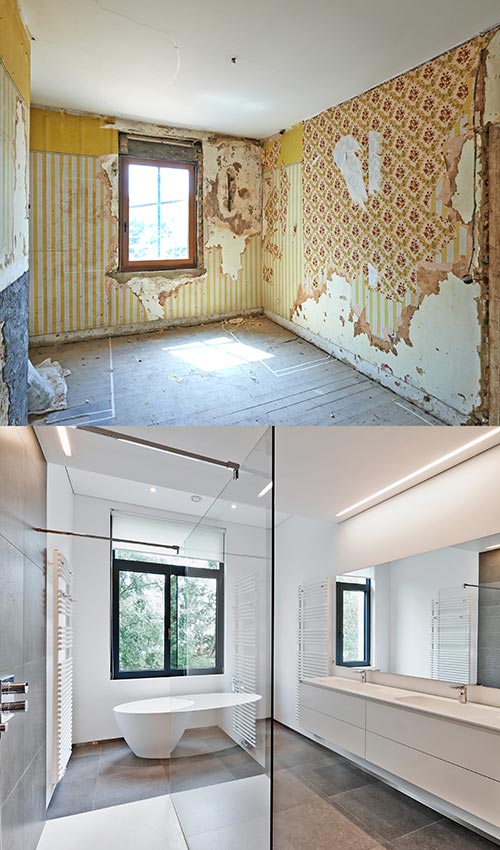|
Fix-and-Flip & New Construction
 When considering building a new home, or buying one to filp for a profit, accurate appraisals are vital to getting financing, contractor quotes, and preventing the over-building of the subject’s neighborhood which could result in a home more costly than it is valuable. Both of these scenarios will require at least two appraisals. The first determines the value of the property as it sits now, including the existing building in whatever condition it may be, and the value of the land beneath it if you were to completely tear down any existing structure. In a new construction project, this appraisal would reflect the raw land value and any site improvements already present. As a general rule of thumb, the final sale price of the home should not exceed three times the value of the land beneath it.
The second appraisal is called an After Repair Value appraisal (often shortened to ARV). This appraisal considers the proposed structure to be built on the property, or improvements planned to an existing building, to determine what the property should be worth when completed. Establishing this value requires a very detailed outline of the design and finishes the final property will have, and usually requires contractor's quotes to be fully accurate. The appraiser then compares the proposed property to homes in the area similar to what the final project will be to establish the likely value after all repairs or construction are complete. The difference between the values of these two appraisals must be enough to cover all construction costs and, in most cases, leave room for an entrepreneurial profit, for the project to make sense. Financial institutions will analyze all of these factors when considering issuing a loan, but it is also possible, and indeed recommended, for individuals to obtain an ARV appraisal before wading into a project that could be a huge financial undertaking. The cost of an appraisal is dwarfed by the cost of misreading the market.
|